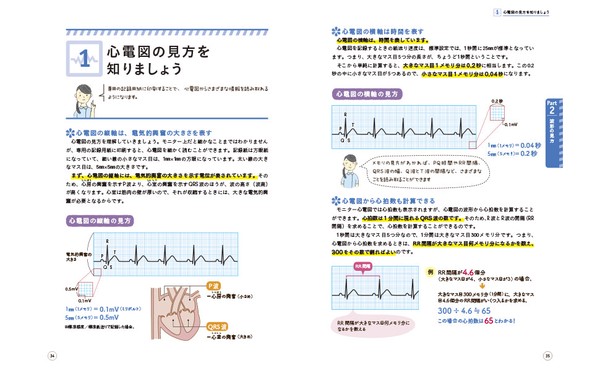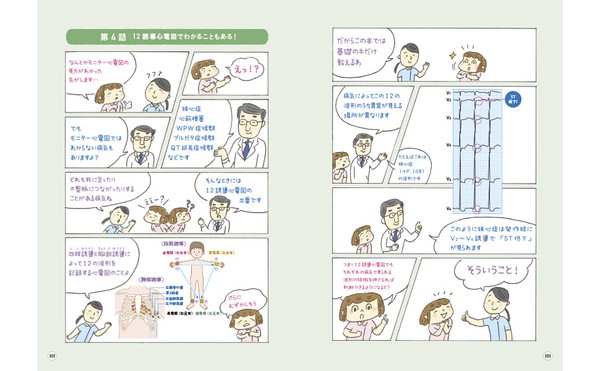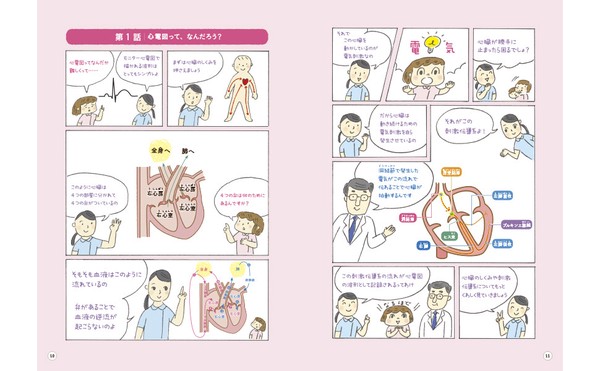


Vendor Profile
SHINSEI Publishing Co..Ltd.
| Address | 2-24-10 taitou Taitou-ku Tokyo, JAPAN ZIP:110-0016 |
|---|---|
| Representative Name | Yasuhiro Tominaga |
| Annual Revenue | closed |
| No. of Employees | 35 |
| Web Site URL | |
| SNS |







Other items from this category
Language/Textbooks Book
SD item code:12180804
| Detail | Price & Quantity | ||
|---|---|---|---|
| S1 |
Takanori Ikeda Supervisor
池田 隆徳 監
(-)
JAN:9784405012790
|
(-)
JAN:9784405012790
Wholesale Price: Members Only
1 pc /set
In Stock
|
|
| Dimensions |
|---|
|
*Size (cm):25.7 x 18.2 x 1.0
*Number of pages: 128 |
| Specifications |
|---|
|
Country of manufacture: Japan
Material / component: Paper
Product tag: None
|
Description
| This book explains ECG more gently and carefully than any other book, taking into account the reality that many people have difficulty with ECG. Each chapter begins with a cartoon to give the reader a sense of realism. The anatomical diagrams and heart charts are illustrated by a former nurse. [After correctly understanding "heart" and "arrhythmia," 13 arrhythmias most likely to be encountered in the field, including "ventricular fibrillation" and "ventricular tachycardia," are discussed, and "characteristics of waveforms," "mechanism of occurrence," and "points to deal with" are thoroughly explained. This is a new edition of a well-established long-selling book. [Features of this book] *By providing a concise explanation of the basics, such as how the heart works, the content is easy to understand and use for not only nursing students who are learning about electrocardiography, but also new nurses, paramedics, and other medical professionals. *In order to recognize arrhythmia (abnormal waveform) in an EKG, it is essential to correctly understand normal pulses (normal waveform). From this point of view, a thorough and detailed explanation of normal waveforms is also provided. *Focusing on 13 arrhythmias, including ventricular fibrillation and ventricular tachycardia, which are most likely to be encountered in the field, the characteristics of waveforms, mechanisms of occurrence, and points to consider when dealing with them are explained in detail. *The book also includes a cartoon spread at the beginning of each chapter to help the reader grasp the main points of the chapter at a glance. The book is not intended for rote memorization, but rather to provide a sense of realism at all times. *A soft and gentle design and layout so that nursing students and new nurses can read the book with ease. Easy-to-understand, carefully deformed illustrations and handwritten text are used extensively. *Anatomical and cardiac diagrams are illustrated by a former nurse. Even the deformed illustrations are finished to a high degree of reliability. This book is ideal as the first book to learn about *[monitor electrocardiogram] and can be used as a bridge to practice (in the field). |
More
| Shipping Method | Estimated Arrival |
|---|---|
| Sea Mail | From May.19th to Jul.21st |
| Air Mail | From May.1st to May.5th |
| EMS | From Apr.30th to May.5th |
| Pantos Express | From May.2nd to May.7th |
| DHL | From Apr.30th to May.2nd |
| UPS | From Apr.30th to May.2nd |
| FedEx | From Apr.30th to May.2nd |
|
Some trading conditions may be applicable only in Japan.
*Important Notice
Books are subject to the resale price maintenance system, which allows publishers by law to specify the selling price. We ask that your company also adhere to the sales price specified by us. If you fail to do so, we will discontinue our business with you. We ask for your understanding in advance. |
Other items from this category:
The anatomical diagrams and heart charts are illustrated by a former nurse.
[After correctly understanding "heart" and "arrhythmia," 13 arrhythmias most likely to be encountered in the field, including "ventricular fibrillation" and "ventricular tachycardia," are discussed, and "characteristics of waveforms," "mechanism of occurrence," and "points to deal with" are thoroughly explained.
This is a new edition of a well-established long-selling book.
[Features of this book]
*By providing a concise explanation of the basics, such as how the heart works, the content is easy to understand and use for not only nursing students who are learning about electrocardiography, but also new nurses, paramedics, and other medical professionals.
*In order to recognize arrhythmia (abnormal waveform) in an EKG, it is essential to correctly understand normal pulses (normal waveform). From this point of view, a thorough and detailed explanation of normal waveforms is also provided.
*Focusing on 13 arrhythmias, including ventricular fibrillation and ventricular tachycardia, which are most likely to be encountered in the field, the characteristics of waveforms, mechanisms of occurrence, and points to consider when dealing with them are explained in detail.
*The book also includes a cartoon spread at the beginning of each chapter to help the reader grasp the main points of the chapter at a glance. The book is not intended for rote memorization, but rather to provide a sense of realism at all times.
*A soft and gentle design and layout so that nursing students and new nurses can read the book with ease. Easy-to-understand, carefully deformed illustrations and handwritten text are used extensively.
*Anatomical and cardiac diagrams are illustrated by a former nurse. Even the deformed illustrations are finished to a high degree of reliability.
This book is ideal as the first book to learn about *[monitor electrocardiogram] and can be used as a bridge to practice (in the field).